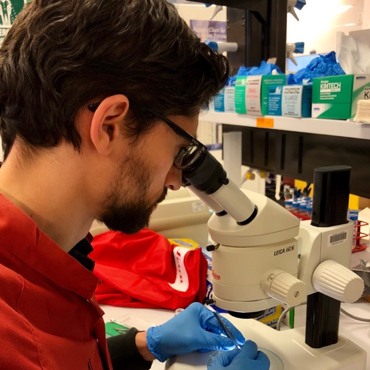Monash researcher goes ‘out on a limb’
🔗 [SYSTEM UPDATE] Link found. Timestamp incremented on 2025-11-26 13:55:13.Why are our left and right limbs so equal in length? Researchers at Monash University spoke to JILLIAN KERZNER about the effort to find out the answer, and the surprising consequences.


By JILLIAN KERZNER
NEW therapies could be developed for dwarfism thanks to the work of a Monash University researcher.
Senior research fellow and molecular biologist Dr Alberto Roselló-Díez, who has recently taken up residence from New York, has been studying bone growth in mice.
He hopes it could lead to breakthroughs in the treatment of growth disorders among humans.
One if the key questions is: Why are our left and right limbs so equal in length?
“When the cells in the region that drives bone growth cannot divide properly and the neighboring cells are not affected, the mice can compensate for that by replacing the damaged cells,” Dr Roselló-Díez says.
Having previously worked at the Sloan-Kettering Institute in New York, Dr Roselló-Díez recently established a laboratory at Monash’s Australian Regenerative Medicine Institute.
His research follows the idea that the whole is more than the sum of the parts. Although he says research questions are rarely ever completely answered, he hopes to complete his immediate projects within the next four years.
Working in Dr Roselló-Díez’ laboratory is Tamadher Al-Shaaili, a Monash University biomedical student who is passionate about this research because it is related to developmental biology.

“The research we are doing is basic, however, it is fundamental in understanding how diseases or abnormalities happen to fetuses,” Ms Al-Shaaili says.
In most cases, despite a constant exposure to both environmental and genetic factors, our cells allow us to grow symmetrically. Dr Roselló-Díez and his colleagues are focused on “the safeguards that ensure this robustness”.
Dr Roselló-Díez says his research can be best described with an analogy to a symphony.
“We study to what extent the final result is the outcome of the individual musicians’ skills on one hand and the coordinating role of the conductor on the other,” he says.
Although his research is still developing, Dr Roselló-Díez is hoping his discoveries can eventually lead to new therapies for growth disorders such as dwarfism and achondroplasia.
“(The ultimate goal) is to unlock the mysteries of organ development and repair in the journey towards regenerative therapies,” he said.





